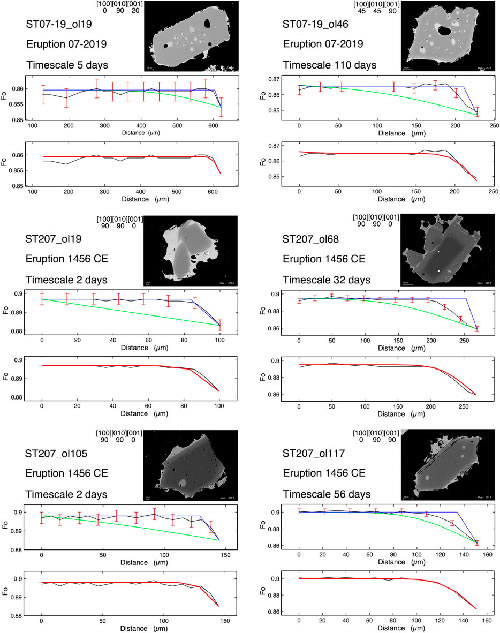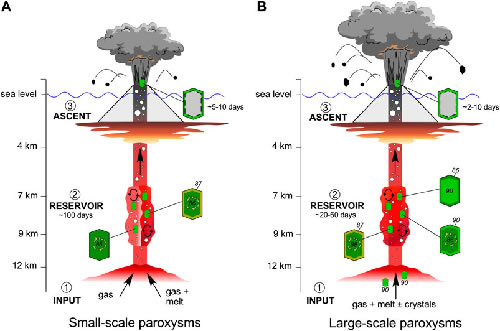Paroxysms at Stromboli Volcano (Italy): Source, Genesis and Dynamics

Métrich N., A. Bertagnini, M. Pistolesi (2021).
Frontiers in Earth Science, https://doi.org/10.3389/feart.2021.593339.
Abstract
Deciphering the triggering mechanisms of violent explosive activity is of broad interest for understanding the dynamics of basaltic open-vent volcanic systems. For nearly 1300 years Stromboli has been renowned not only for its continuous degassing activity and mild explosions at the summit craters, but also for short-lived, violent explosive events of variable scale, known as major explosions and paroxysms. Here, we focus on the 1456 and 1930 paroxysms and on the most recent events, in July and August 2019 at Stromboli. We show that shallow phenomena such as flank collapse, lava outpouring through fractures opening, or partial emptying of the shallow conduit, only speed up volatile-rich magma ascent by increasing the decompression rate, whereas pressurization of the crustal system and the deep refilling by magma and its CO2-rich gas phase play a major role in triggering paroxysms. Moreover, we present new data on the geochemistry of the 2019 bulk pumice, along with a compilation of data from the literature, chemical profiles in olivine crystals, and the physical parameters of explosive eruptions of wide ranging magnitude and intensity. For small and large paroxysms, timescales were derived from Fe–Mg diffusion profiles in olivine. In both types of explosion, the last phases of crystallization-diffusion indicate rapid magma ascent rates of two to ten days prior to eruption. Trace element concentrations (Nb, La and Ba) and ratios (Rb/Th) indicate that the 2019 pumice samples plot in the domain of magma batches erupted within the last 20 years at Stromboli. As a whole, there is no correlation between magma geochemistry and magnitude or intensity of explosive eruptions, which span a range of ∼3 orders of magnitude (from major explosions to large paroxysms) based on estimates of erupted tephra volumes. In contrast, olivine compositions are a good proxy for erupted tephra volumes and magma flux. The correlation among physical and chemical parameters, which is valid for the overall spectrum of eruptions, implies that the magmatic source ultimately controls eruptive dynamics.



Devi effettuare l'accesso per postare un commento.